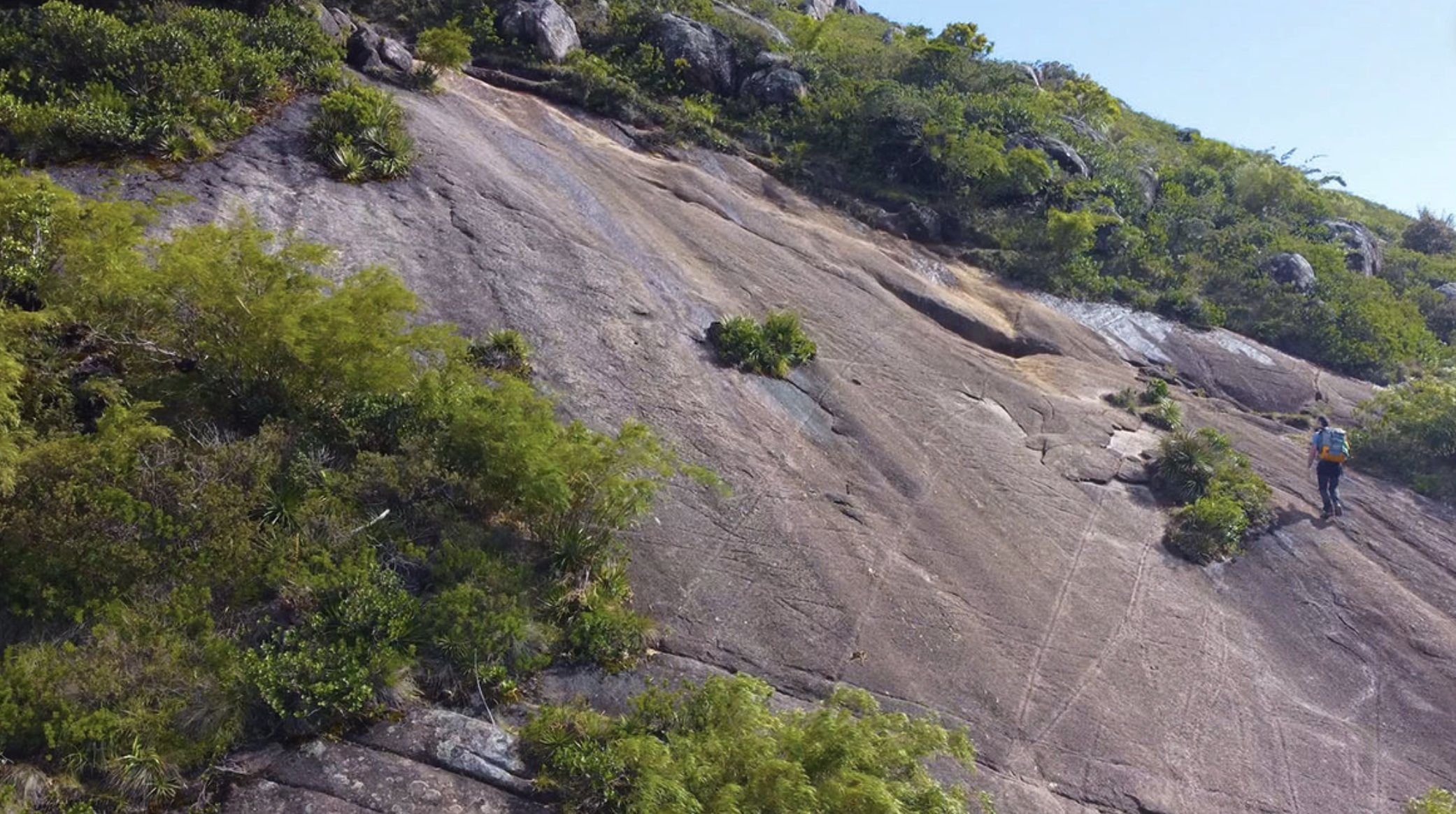Você sabia que exercícios de respiração podem melhorar sua performance em altitudes altas? A redução da pressão de oxigênio afeta o desempenho. Mas, uma técnica simples pode ajudar: a respiração consciente.
Quando descansamos, fazemos 10 a 15 respirações por minuto. Isso significa uma ventilação de cerca de 7,5 litros por minuto. Mas, durante o exercício intenso, essa frequência sobe para 40 a 50 respirações por minuto.
Em altitudes elevadas, a demanda por oxigênio aumenta muito. É aqui que os exercícios de respiração são cruciais. Eles ajudam a adaptar-se ao ambiente com menos oxigênio.
Praticar técnicas de respiração, como controlar o ritmo e a profundidade, melhora a oxigenação. Isso ajuda o corpo a se adaptar à hipóxia. Além disso, esses exercícios também promovem relaxamento, redução da ansiedade e melhor concentração.
Quais são os benefícios da respiração consciente em altitudes elevadas? Como controlar a respiração para melhorar o desempenho? E quais são as melhores práticas de respiração para atletas em altitudes extremas?
Principais pontos deste artigo:
- A prática de exercícios de respiração pode melhorar a performance em altitudes elevadas
- A respiração consciente potencializa a oxigenação dos tecidos e ajuda na adaptação ao ambiente hipóxico
- Técnicas específicas de respiração podem controlar a frequência e a profundidade da respiração
- Exercícios de respiração beneficiam não apenas atletas, mas também pessoas que desejam controlar a ansiedade
- Descubra as melhores práticas de respiração para obter o máximo desempenho em altitudes extremas
Efeitos da exposição à altitude
Exercícios em altitudes elevadas trazem dois grandes desafios: o esforço físico e a falta de oxigênio. A menor pressão de oxigênio afeta a intensidade do exercício. O corpo reage com adaptações, como mais respirar rápido e o coração bater mais forte.
Com o tempo, o corpo se ajusta melhor, aumentando a quantidade de hemácias e a hemoglobina. Essas mudanças ajudam a melhorar a tolerância à falta de oxigênio e a transportar mais oxigênio aos tecidos.
Na altitude de 5.000m, a falta de oxigênio pode reduzir a capacidade do corpo de fornecer oxigênio. Isso leva a menos força muscular, dores de cabeça e problemas respiratórios. A respiração mais rápida pode diminuir o dióxido de carbono no sangue.
Acima de 3.500m, pode surgir a Doença Aguda da Montanha. Os sintomas incluem dores de cabeça, náuseas e fadiga. É crucial se acostumar gradualmente à altitude para evitar problemas.
A aclimatação é o processo pelo qual o corpo se adapta à altitude. O tempo necessário varia com a altitude, mas geralmente leva cerca de 15 dias para 2.500m. Durante esse tempo, o corpo ajusta o coração e os pulmões e aumenta os glóbulos vermelhos.
Efeitos neuropsicológicos da exposição à altitude
A altitude também afeta o cérebro e o comportamento. Entre 610 e 2.440m, podem haver problemas de aprendizado. Acima de 3.500m, podem surgir dores de cabeça e insônia. Em 5.000m, a falta de oxigênio pode causar tonturas e problemas visuais.

Estudos mostram que não aclimatados cometem mais erros em testes neurológicos em 6.000m. Em altitudes muito altas, como 8.000m, pode haver hipotermia ou morte por edema cerebral. É crucial se preparar bem antes de subir a alturas elevadas.
Aclimatação
A aclimatação é o processo pelo qual o corpo se adapta a um ambiente de altitude. Quando você vai a uma altitude mais alta, seu corpo faz ajustes para funcionar bem com menos oxigênio.
Um ajuste importante é a hiperventilação. Isso significa respirar mais rápido e fundo para compensar a menor pressão de oxigênio. Além disso, o coração bate mais rápido para fornecer mais oxigênio aos tecidos.
Essa adaptação leva tempo e muda pouco a pouco. Com o tempo, o corpo equilibra os ácidos e alcalinos e produz mais hemácias. Isso ajuda a transportar mais oxigênio pelo corpo.
O tempo para se acostumar varia de pessoa para pessoa e depende da altitude. Em geral, leva cerca de duas semanas para se acostumar a 2.500 metros. Para cada aumento de 610 metros, você precisa de mais uma semana.
As adaptações duram cerca de 20 dias após voltar ao nível do mar. Por isso, é importante se acostumar antes de praticar esportes em altitudes altas.
| Altitude | Tempo de exposição |
|---|---|
| 2.500 metros | 2 semanas |
| 3.110 metros | 3 semanas |
| 3.720 metros | 4 semanas |
Transporte de oxigênio no sangue
O transporte de oxigênio dos pulmões para os tecidos é feito pela hemoglobina. Ela é encontrada nas hemácias, também conhecidas como glóbulos vermelhos. A hemoglobina tem uma grande afinidade pelo oxigênio, o que a torna essencial para transportá-lo.
Além da hemoglobina, a mioglobina também ajuda no transporte de oxigênio. Ela é encontrada no músculo e atua como um reserva de oxigênio. A hemoglobina se torna mais atraente pelo oxigênio em condições de baixa oxigenação, facilitando a entrega de oxigênio aos tecidos.
Essas adaptações são cruciais para que os músculos recebam o oxigênio necessário em altitudes elevadas.

Policitemia
A policitemia é quando há muitas hemácias no sangue, também chamadas de glóbulos vermelhos. Em mulheres, isso acontece quando há mais de 5.4 milhões por µL de sangue. Em homens, o limite é de 5.9 milhões por µL.
Os sintomas da policitemia incluem dor de cabeça, visão embaçada, cansaço, coceira e tontura. Isso ocorre porque o sangue fica mais viscoso, dificultando o transporte de oxigênio.
As causas da policitemia podem ser várias, como genes, desidratação, doenças do coração e pulmões, obesidade e fumar.
Para diagnosticar a policitemia, faz-se um hemograma. Esse exame mede hemácias, hematócrito e hemoglobina. Se os níveis forem altos, é policitemia.
Tipos de policitemia
Existem vários tipos de policitemia, como a primária, relativa e secundária. Cada um tem causas e características diferentes, mas todos aumentam a produção de hemácias.
Tratamento da policitemia
Um hematologista define o tratamento da policitemia. Ele pode incluir retirar sangue, usar aspirina ou Hidroxiureia, ou administrar ruxolitinib (Jakavi) em casos graves.
O tratamento é ajustado de acordo com os exames e os sintomas do paciente. O objetivo é controlar os níveis de hemácias e aliviar os sintomas.
Complicações e evolução da policitemia
A policitemia pode causar complicações como coagulação sanguínea, tromboses e enfarto do miocárdio. Também pode causar dor abdominal, sensação de enfartamento e aumentar o risco de coagulação sanguínea.
Na maioria dos casos, a policitemia é controlada com medicação e estilo de vida saudável. Mas, em casos raros, pode evoluir para leucemia aguda ou mielofibrose, exigindo tratamento contínuo.
| População Masculina | População Feminina |
|---|---|
| Entre 0.5% a 0.7% dos homens nos Estados Unidos sofrem de policitemia relativa. | – |
| – | Para mulheres, níveis de hematócrito iguais ou superiores a 57% quase sempre indicam aumento verdadeiro da massa eritrocitária. |
| Os pacientes com policitemia relativa geralmente têm entre 45 e 55 anos, sendo em média 10 anos mais jovens do que os pacientes típicos com policitemia vera. | – |
Benefícios do treinamento em altitude
O treinamento em altitude é muito usado por atletas que querem melhorar seu desempenho. Quando se treina em alturas altas, como 2.400 metros ou mais, o corpo faz adaptações que melhoram a saúde.
Um grande benefício é o aumento dos glóbulos vermelhos no sangue. Isso pode levar até nove dias a acontecer após o treinamento. Os glóbulos vermelhos são essenciais para levar oxigênio aos músculos.
Além disso, a altitude aumenta o nível de oxigênio no sangue em até 5%. Isso ajuda os atletas a terem mais energia em esportes de resistência.
Atletas que treinam em altitude podem correr mais rápido. Um estudo mostrou que alguns corredores melhoraram seus tempos em 5.000 metros em até 36,6 segundos. Mas, outros ficaram mais lentos em 24 segundos.
Quando os atletas fazem treinamentos em altitude de forma regular, os resultados podem variar. Por exemplo, alguns corredores melhoraram seus tempos após duas sessões de três semanas. Outros melhoraram apenas em uma sessão ou ficaram piores.
O treinamento em altitude não é bom para todos. Pode piorar doenças como a hemocromatose, que é causada por muito ferro no sangue.
A altitude pode afetar a quantidade de oxigênio no ar. Em La Paz, Bolívia, por exemplo, há 33% menos oxigênio do que no nível do mar. Isso pode afetar a capacidade de energia dos atletas.
Para maximizar os benefícios, alguns atletas usam a estratégia “Live high, train low”. Eles vivem em altitudes altas para se adaptarem, mas treinam em locais de menor altitude para manter a intensidade.
Estudos mostram que altitudes entre 1300m e 2320m melhoram a concentração de hemoglobina em atletas de Endurance. Isso vale tanto para homens quanto para mulheres.
Porém, altitudes muito altas podem diminuir a capacidade de oxigenar o sangue. Isso pode afetar o consumo máximo de oxigênio e a frequência cardíaca.
É recomendado fazer várias exposições à altitude ao longo do ano. Isso ajuda a manter as adaptações e a recuperar os atletas.
Benefícios do treinamento em altitude:
- Melhora no desempenho físico
- Adaptações fisiológicas benéficas
- Aumento do VO2max
- Incremento na tolerância ao esforço em ambientes de altitude
- Maior capacidade pulmonar
| Benefícios | Efeitos no desempenho físico |
|---|---|
| Aumento do volume de glóbulos vermelhos nas correntes sanguíneas | Melhora no transporte de oxigênio para os músculos |
| Aumento nos níveis de oxigênio no sangue | Diferença competitiva em esportes de resistência |
| Melhorias no desempenho esportivo (varia de acordo com o indivíduo) | Aprimoramento do tempo de corrida em determinadas distâncias |
| Progresso da concentração de hemoglobina (Hbmass) | Aumento da capacidade aeróbica |
Recomendações para o treinamento em altitude
Para obter os melhores resultados no treinamento em altitude, é importante seguir algumas recomendações. Elas garantem a segurança dos atletas. Entre elas, destacam-se:
Duração do treinamento em altitude
A duração do treinamento em altitude varia conforme o objetivo e a condição física do indivíduo. Estudos mostram que o período mínimo recomendado é de 21 dias. Esse tempo é necessário para que os ganhos fisiológicos sejam efetivos e durem por dois a três meses.
Intervalo de exposição à altitude
É importante subir gradualmente, dando ao corpo tempo para se adaptar às mudanças na oferta de oxigênio. Recomenda-se um intervalo de exposição de altitude moderada antes de alcançar altitudes mais elevadas. Isso ajuda a minimizar os efeitos adversos da hipóxia e a promover uma aclimatação gradual.
Acompanhamento médico
O acompanhamento médico é essencial durante o treinamento em altitude. Os profissionais de saúde podem realizar exames físicos regulares para verificar a resposta do organismo à hipóxia. Eles também monitoram os níveis de oxigênio no sangue. Esse monitoramento é crucial para garantir a segurança dos atletas e identificar possíveis complicações ou riscos à saúde.
Aclimatação gradual
A aclimatação gradual é um processo fundamental para permitir que o corpo se adapte às mudanças na pressão do ar e à disponibilidade de oxigênio. Expor-se gradualmente a altitudes cada vez mais elevadas, respeitando o intervalo recomendado, ajuda a minimizar os riscos do mal da altitude. Isso também melhora a adaptação fisiológica.
Monitoramento dos níveis de oxigênio no sangue
É essencial monitorar regularmente os níveis de oxigênio no sangue durante o treinamento em altitude. A queda na pressão parcial de oxigênio pode levar a distúrbios e complicações. Portanto, realizar medidas regulares dos níveis de oxigênio ajuda a garantir a segurança e a eficácia do treinamento.
Ao seguir essas recomendações, os atletas podem garantir um treinamento em altitude seguro e eficaz. No entanto, é importante lembrar que cada indivíduo é único e pode responder de maneira diferente ao treinamento em altitude. Portanto, é fundamental adaptar as recomendações às necessidades específicas de cada atleta, sempre com o suporte de profissionais de saúde especializados.
Conclusão
Os exercícios de respiração são essenciais para melhorar o desempenho em altitudes altas. Eles ajudam a otimizar a oxigenação e se adaptar à hipóxia. Um estudo recente mostrou que técnicas de respiração diafragmática aumentam a Pressão Inspiratória Máxima (PImáx).
É crucial seguir recomendações médicas e fazer a aclimatação gradual. Isso ajuda a evitar riscos à saúde. Também é importante considerar a idade e a condição física ao planejar o treinamento.
Praticar exercícios de respiração e treinamento em altitude melhora a performance esportiva. Isso inclui aumento de resistência, capacidade aeróbica e recuperação muscular. É uma estratégia eficaz para esportes de alta intensidade.
Em resumo, os exercícios de respiração são uma ferramenta poderosa para melhorar o desempenho em altitudes elevadas. Com o treinamento certo e técnicas de respiração consciente, é possível aumentar a capacidade pulmonar e alcançar resultados em ambientes com baixo teor de oxigênio.



JJ77. Simple name, eh? Hope the site also simple to use haha! Give it a dekko at jj77 and let me know what you think.
See what 21bets has to offer. Always looking for new places to place my bets. Hope it’s got a good selection. Wish me luck guys! Find it here: 21bets
Baji999login, easy to remember website name. Quick Login is always appreciated, ain’t nobody got time for complicated sign-ins! Here is the link: baji999login